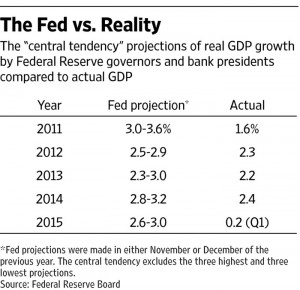The New York Times editorial board (photos; note that all are white except for a token Asian woman, a token black guy, and a token Indian) has written “Forcing Black Men Out of Society” in which they complain that low-skill low-income black men have been excluded from work and traditional family life. There is no reflection, however, on the fact that the policies for which the New York Times has tirelessly advocated are to some extent responsible.
First, it isn’t clear that skin color has much to do with this. A white man with poor skills, little education, and a criminal record is not first on anyone’s list to be hired or as a mate. Let’s chalk the emphasis on race to the fact that white people at the New York Times enjoy writing about skin color. There aren’t too many unemployed black doctors or lawyers and most of them presumably are sought after as mates and/or as child support payors. So really this is an article about the low-income portion of the distribution of American workers.
What policies has the Times advocated for?
- high minimum wages
- regulations on employers that push up the cost of labor
- comfortable welfare benefits
- profitable child support
As Milton Friedman noted 42 years ago,
A minimum-wage law is, in reality, a law that makes it illegal for an employer to hire a person with limited skills. Playboy: Isn’t it, rather, a law that requires employers to pay a fair and livable wage? Friedman: How is a person better off unemployed at a dollar sixty an hour than employed at a dollar fifty? … the effect of a minimum-wage law is to produce unemployment among people with low skills. And who are the people with low skills? In the main, they tend to be teenagers and blacks, and women who have no special skills or have been out of the labor force and are coming back. This is why there are abnormally high unemployment rates among these groups. … Blacks get less schooling and are less skilled than whites. Therefore, the minimum-wage rate hits them particularly hard. I’ve often said the minimum-wage rate is the most anti-Negro law on the books. Playboy: Couldn’t those who are hurt by minimum-wage legislation be trained for more skilled jobs at better wages? Friedman: The minimum wage destroys the best kind of training programs we’ve ever had: on-the-job training. …
The Times has advocated for regulations that require employers to provide various benefits, that allow employees to sue for various kinds of discrimination, etc., all of which drive up an employer’s costs to the point that isn’t worth having a low-skill worker around (see “unemployed = 21st century draft horse?”). A lot of people do seem to like the idea of a world in which everyone who has a job is paid well and consequently not everyone can have a job. But if that is what you want, why then express surprise at the fact that a subsection of people are not in the work force?
What about in the domestic sphere? If a woman can have a child out of wedlock and use the child (poor single mother status!) to get a house, food stamps, TANF cash, Medicaid, cell phone, heating oil assistance, etc., what use would she have for a low-income man in the house, especially if she can tap into what income he may have through the child support system. And if having three children with three different men yields twice the revenue of having three children with one man, what would be the rational economic basis of a low-income woman for settling down with one man?
Why do blacks come in for special criticism? In interviewing attorneys for Real World Divorce most of the people they told us about who were behaving contrary to conventional 1950s morality were white. White people were eager to tap into the income of two partners instead of one. White people were eager to profit from children, whether conceived via a one-night encounter or a short-term marriage. White people were eager to collect court-ordered financial transfers (e.g., alimony, child support, property division of premarital assets (traditional gold-digging), etc.) rather than work (see the Massachusetts chapter for a University of Pennsylvania graduate’s 3.2X earnings from a 4-year marriage and a 2-year-old child compared to the average working Penn grad’s income). White people were presumably more likely to tap into a private defendant than the government, but this is an example of differential opportunity not morality. (When the (white) Times reporter Liza Ghorbani was seeking $3 million in tax-free child support revenue she targeted a white married (to someone else) guy; their respective behaviors were not portrayed as behavior defects for white people overall.)
The subtext of this editorial is perhaps “Yes we created all of these incentives for low-income Americans to behave in certain ways but we are certain that they can’t be intelligent enough to follow the incentives. Thus we are going to attribute their following of the incentives to prejudice by white people other than ourselves.”
If the Times is so sure that low-income criminally convicted black men are not getting a fair deal from prejudiced white employers, why doesn’t this multi-billion dollar profit-seeking corporation hire them and thereby boost profits? And if settling down behind a white (black?) picket fence with a low-income black guy is something black women should be enthusiastic about doing, why are Times reporters instead choosing to have profit-yielding out-of-wedlock children with high-income white guys?
Full post, including comments 